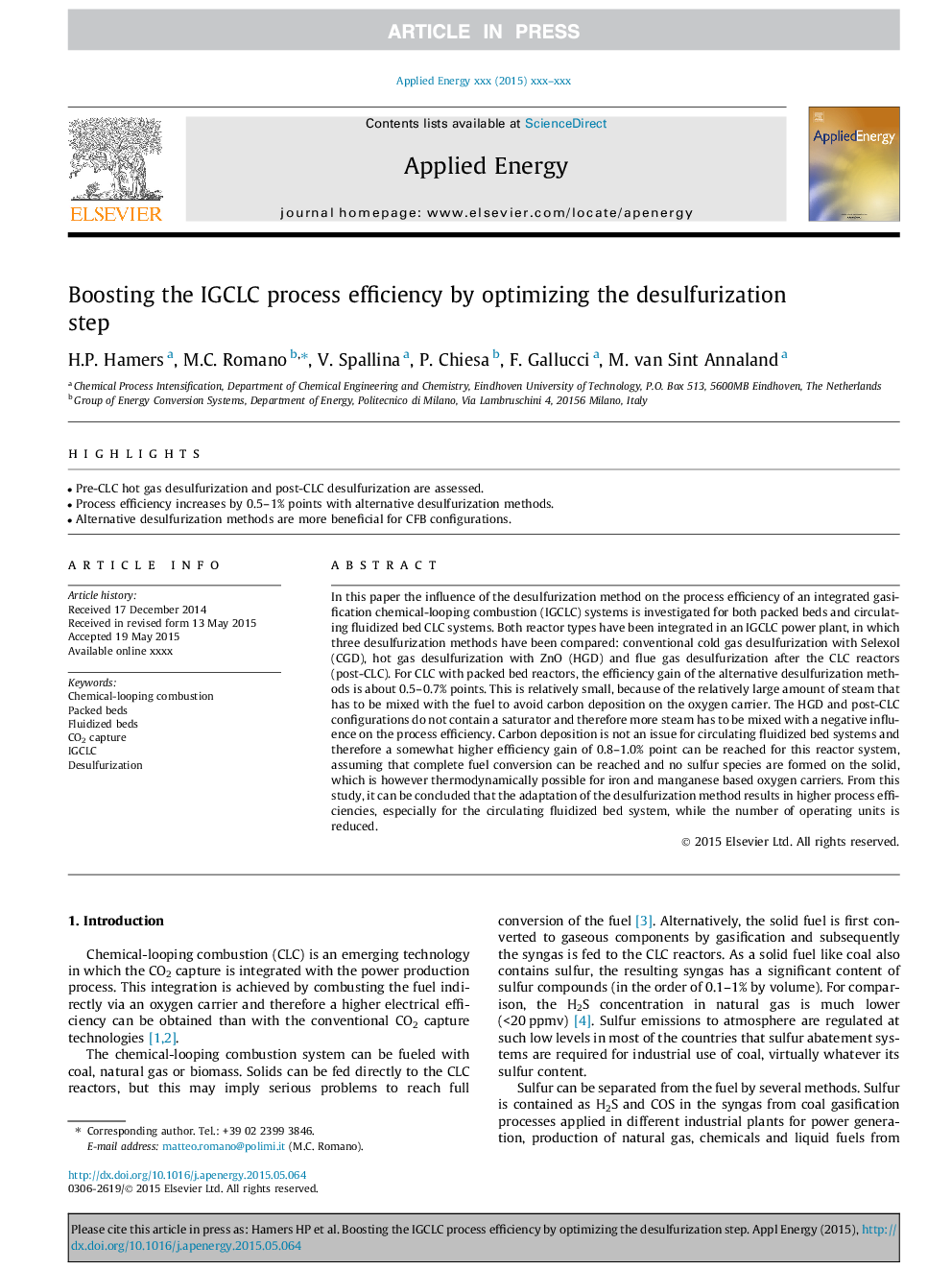| Article ID | Journal | Published Year | Pages | File Type |
|---|---|---|---|---|
| 6685955 | Applied Energy | 2015 | 11 Pages |
Abstract
In this paper the influence of the desulfurization method on the process efficiency of an integrated gasification chemical-looping combustion (IGCLC) systems is investigated for both packed beds and circulating fluidized bed CLC systems. Both reactor types have been integrated in an IGCLC power plant, in which three desulfurization methods have been compared: conventional cold gas desulfurization with Selexol (CGD), hot gas desulfurization with ZnO (HGD) and flue gas desulfurization after the CLC reactors (post-CLC). For CLC with packed bed reactors, the efficiency gain of the alternative desulfurization methods is about 0.5-0.7% points. This is relatively small, because of the relatively large amount of steam that has to be mixed with the fuel to avoid carbon deposition on the oxygen carrier. The HGD and post-CLC configurations do not contain a saturator and therefore more steam has to be mixed with a negative influence on the process efficiency. Carbon deposition is not an issue for circulating fluidized bed systems and therefore a somewhat higher efficiency gain of 0.8-1.0% point can be reached for this reactor system, assuming that complete fuel conversion can be reached and no sulfur species are formed on the solid, which is however thermodynamically possible for iron and manganese based oxygen carriers. From this study, it can be concluded that the adaptation of the desulfurization method results in higher process efficiencies, especially for the circulating fluidized bed system, while the number of operating units is reduced.
Related Topics
Physical Sciences and Engineering
Energy
Energy Engineering and Power Technology
Authors
H.P. Hamers, M.C. Romano, V. Spallina, P. Chiesa, F. Gallucci, M. van Sint Annaland,
